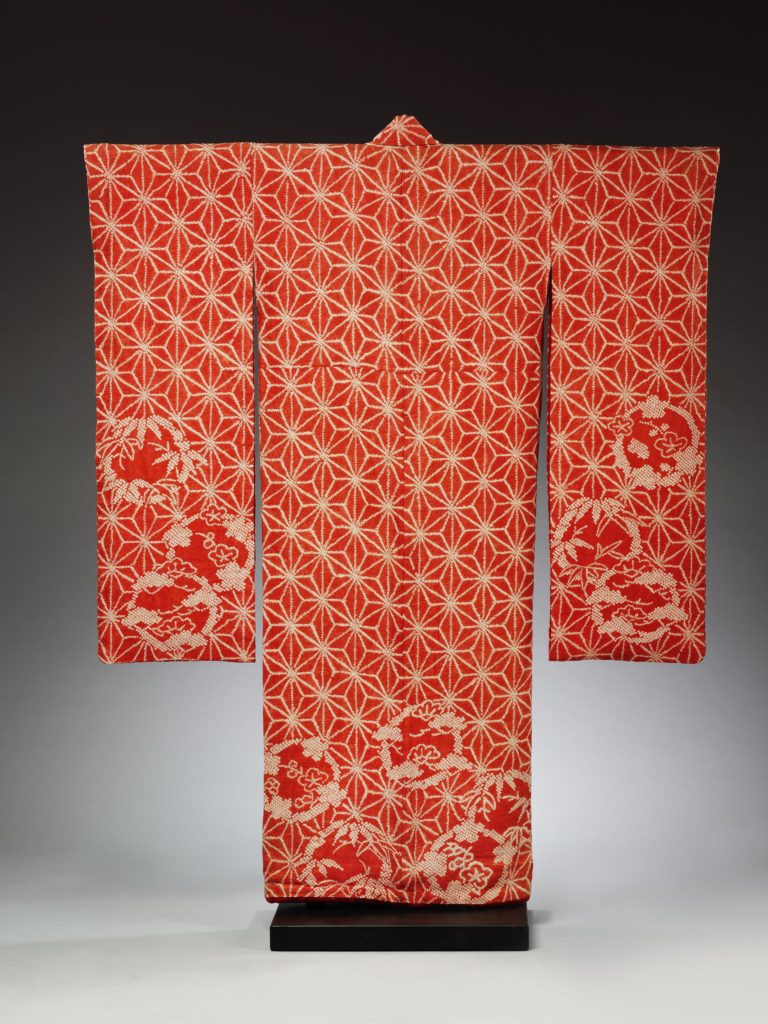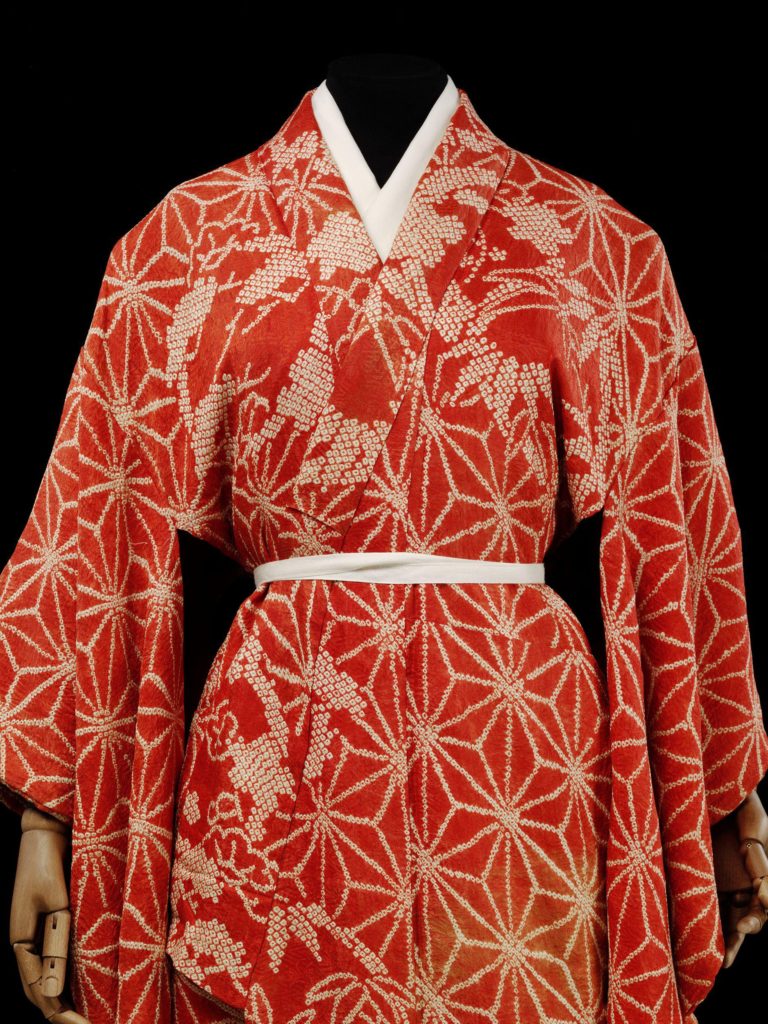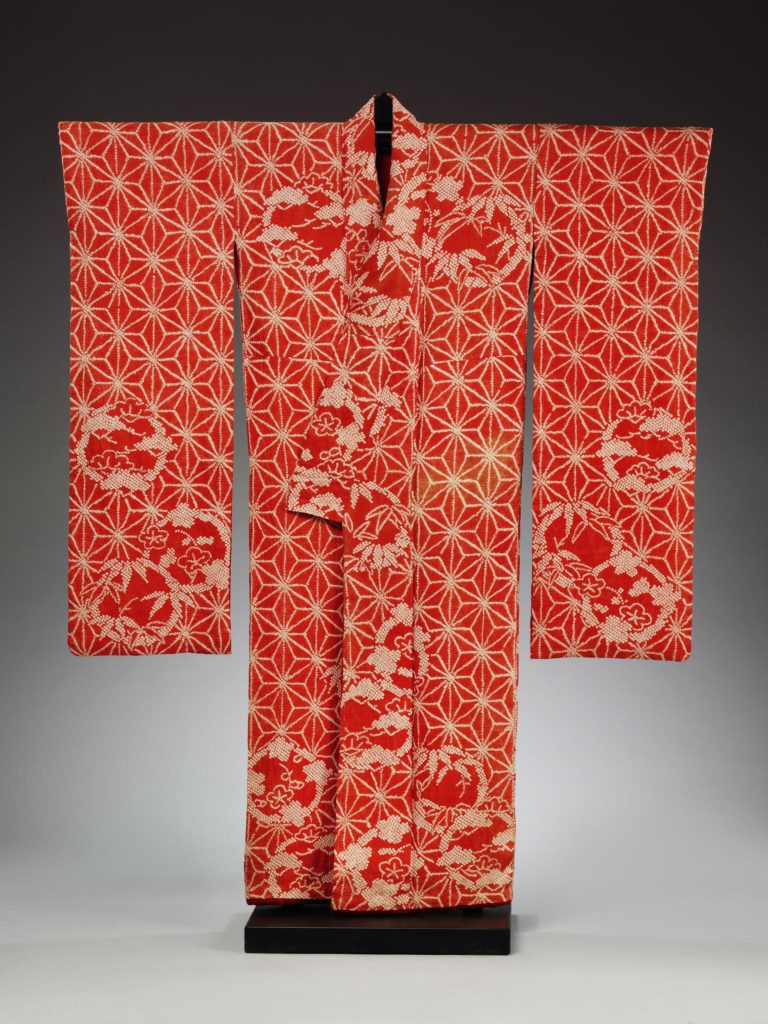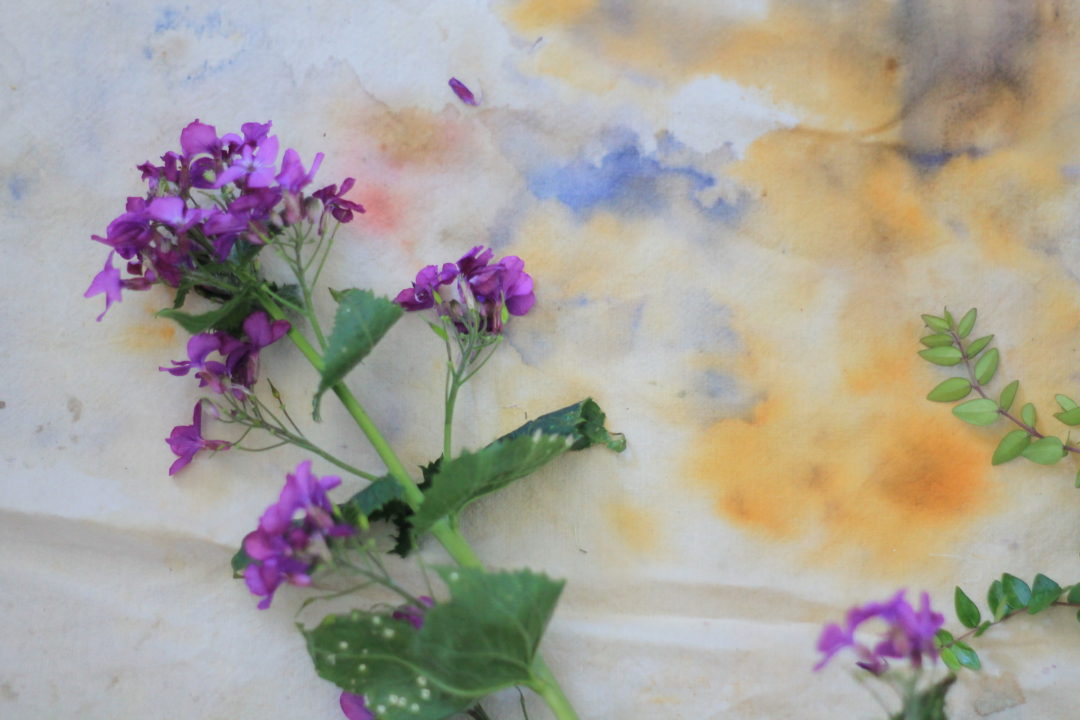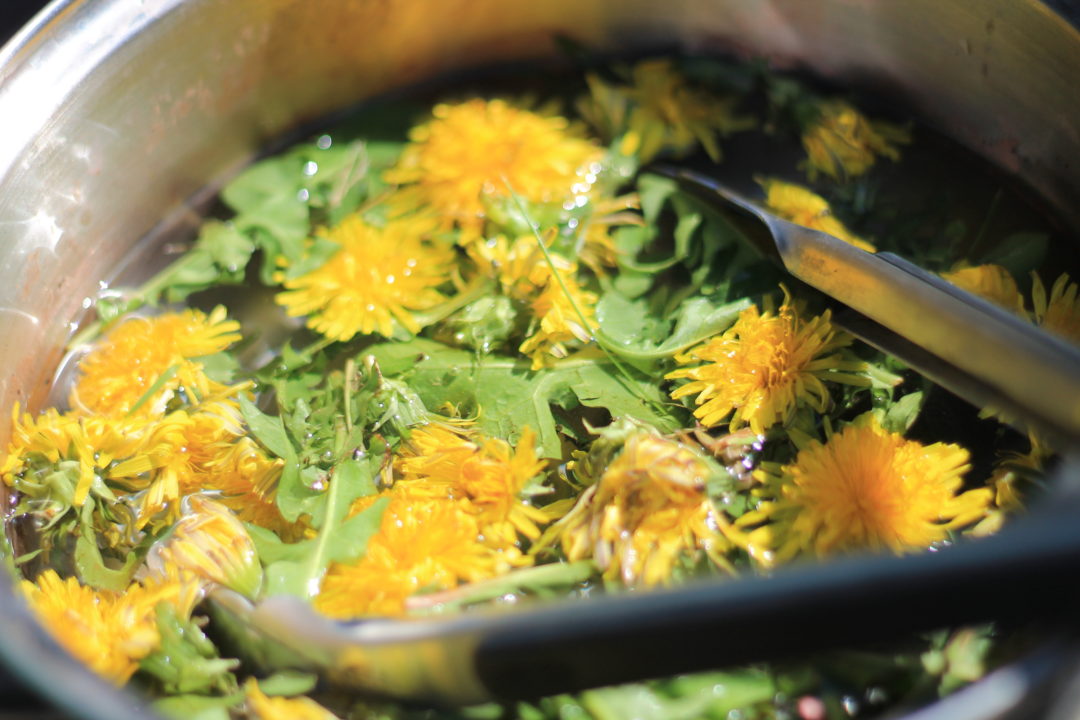Kimono: Kyoto to Catwalk
During my wanders around the Kimono Exhibition at the Victoria & Albert museum in London, I was particularly fascinated by the pieces that are hand-dyed with natural dyes using shibori techniques. A particular red kimono caught my attention, when reading about it I discovered a link between the hemp leaf which resembles the motif in the popular traditional shibori pattern called Asanoha. “Asa” means hemp and “ha” means leaf.
Image credit © Victoria and Albert museum
Another element of this beautifully striking red kimono, created with shibori techniques, is the wonderful natural red dye that is derived from safflower. This is very expensive dye, due to the complicated, time consuming process it takes to extract the red dye. Firstly, the yellow pigment should be washed away with cold water. This is a very lengthy process, I tried it myself on a small scale, which still felt labour intensive. Once this is done, an alkali is added following strips of linen to absorb the red. Those strips are put into diluted vinegar before a special extract from plum is added to perpetuate onto the silk.
Below is an in depth video of the safflower extraction and natural dye process in Japan. I first watched the ‘In Search of Forgotten Colours’ video at the Living Colours Exhibition at Japan House, 2019.
To find out more about different natural dye processes, including a brief description of shibori techniques, click here.
Hemp: Sustainability and History
Having visited the Kimono Exhibition and discovering the intricate designs created with a diverse range of techniques. A correlation between the Hemp Leaf shibori pattern and hemp as a fibre came to light. The importance of hemp as a plant, a bast fibre, sustainable crop, multi-usage and even spirituality in Japan seems like a relevant topic. Japan in particular, historically farmed hemp, they have a huge hemp culture and use the plant vastly for its textile fibre. As the fashion and textiles industry in particular, are looking for circular design systems. Using renewable-plant based textiles like hemp could impact the environment in a positive way.
